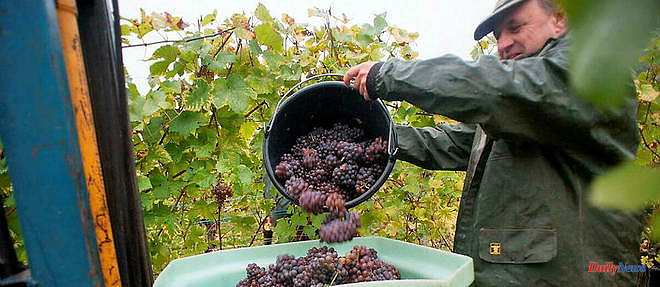The first bunches of grapes were believed to have been grown by our ancestors somewhere in the Caucasus around 8,000 years ago. Fake ! Once again, science is setting the record straight. For this, it was necessary to go through the genetic mill no less than 3,525 grape varieties (2,503 domesticated and 1,022 wild). Cyclopean work, worthy of the construction of the Great Wall of China, and carried out mainly by Chinese geneticists. The study has just been published in the journal Science.
It all starts with a modest vine (Vitis sylvestris) which has colonized European and Asian forests for ages. Only then the animals appreciate its tiny tart black berries. More than two hundred thousand years ago, a first schism took place within the species, creating two sub-populations of wild vines. One flourishes in Western Europe, the other in Eastern Europe. Then a second schism occurs within this last population, on the occasion of the last ice age (- 110,000 years). Indeed, the mountain ranges separating the Caucasus from the Fertile Crescent become an impassable barrier. On each side, the wild vine takes its own genetic path.
Twelve thousand years ago, when the atmosphere warmed up, men decided to throw away their walking sticks to settle down and begin to domesticate the most useful wild species. It is from this moment that humanity goes wrong, but that is another story... The first peasants begin to plant cereals, then, very quickly, fig trees, olive trees, date palms and vines (around – 11,000 years ago).
By an as yet unexplained coincidence, the populations of the Caucasus and the Fertile Crescent simultaneously undertake the cultivation of this vine producing small, tart fruits. According to the genetic dating of the scientific publication, the cultivation of the vine therefore started three thousand years earlier than previously thought.
Grapes are eaten and drunk. But in what chronological order? The genes tell us that it happened simultaneously. Wine did not predate table grapes as some scholars claimed. At least in the Fertile Crescent, because in the Caucasus the men, certainly more thirsty, only vinified their grapes.
The vines of the two centers of domestication did not experience the same fate. The Caucasian grape varieties have not really succeeded in being exported. As the infographic shows, they didn't get much further than the Balkans. On the other hand, the ordinary grape varieties of the Fertile Crescent have had ants in their legs. They naturally accompanied the peasants of the Fertile Crescent on their long march towards Western Europe.
After several millennia of progress, the good big red was able to quench the thirst of our Cromagnon ancestors. At least those who had survived the invasion of the peasants from the Near East. Along the way, the vine has borrowed, by hybridization with wild varieties, many genes improving its resistance, its taste value, its sugar content, and its appearance.
This is how the geneticists of the study delimited five wine-growing cradles bringing together most of the grape varieties (see map). As a curiosity, all cultivated grape varieties are hermaphroditic, that is to say that their flowers carry both male and female organs, while the wild vine practices the separation of the sexes. We probably owe this mix to the first winegrowers, because it promotes and stabilizes flowering.
This recreation of the Picrate's journey can only be completed with an anonymous drinking song:
The vine is a divine tree,
The vine is the mother of wine.
Let's respect this old mother,
The nurse of five thousand years,
Who to put his children to sleep,
Feed them from a glass.
The vine is the mother of love,
O my Jeanne, let us always drink.












